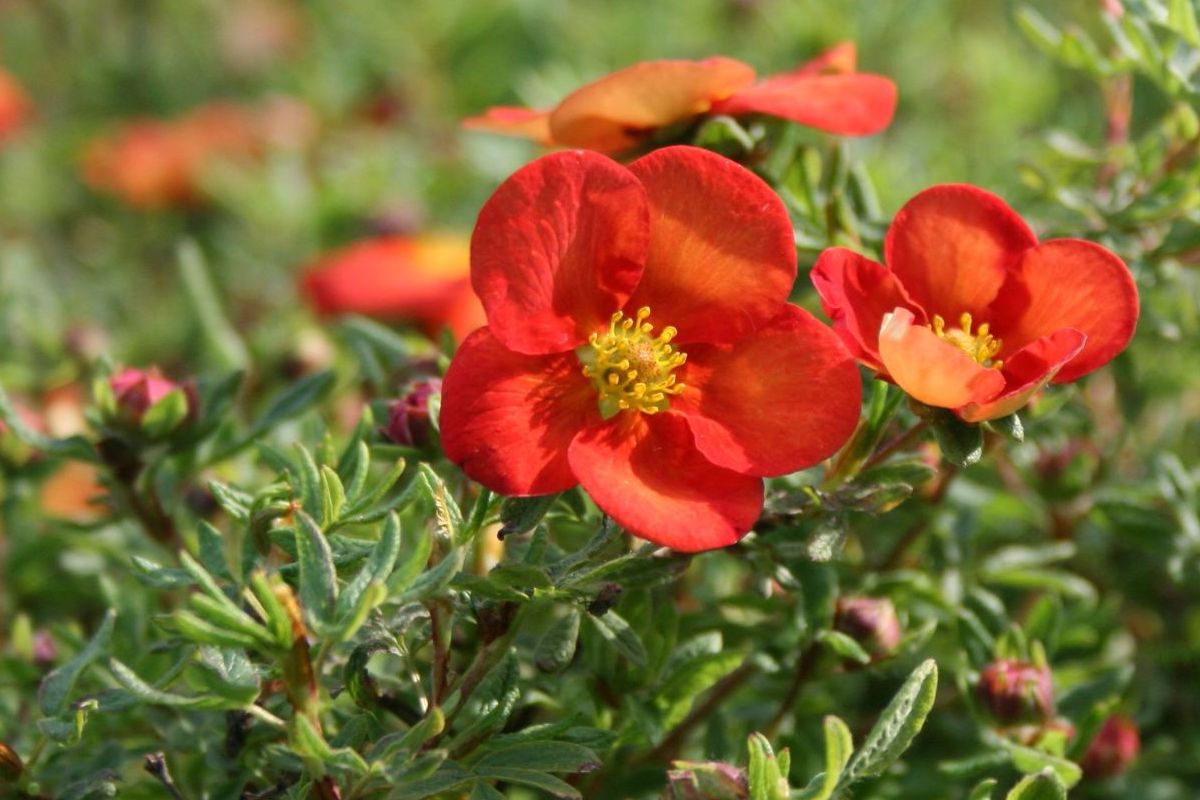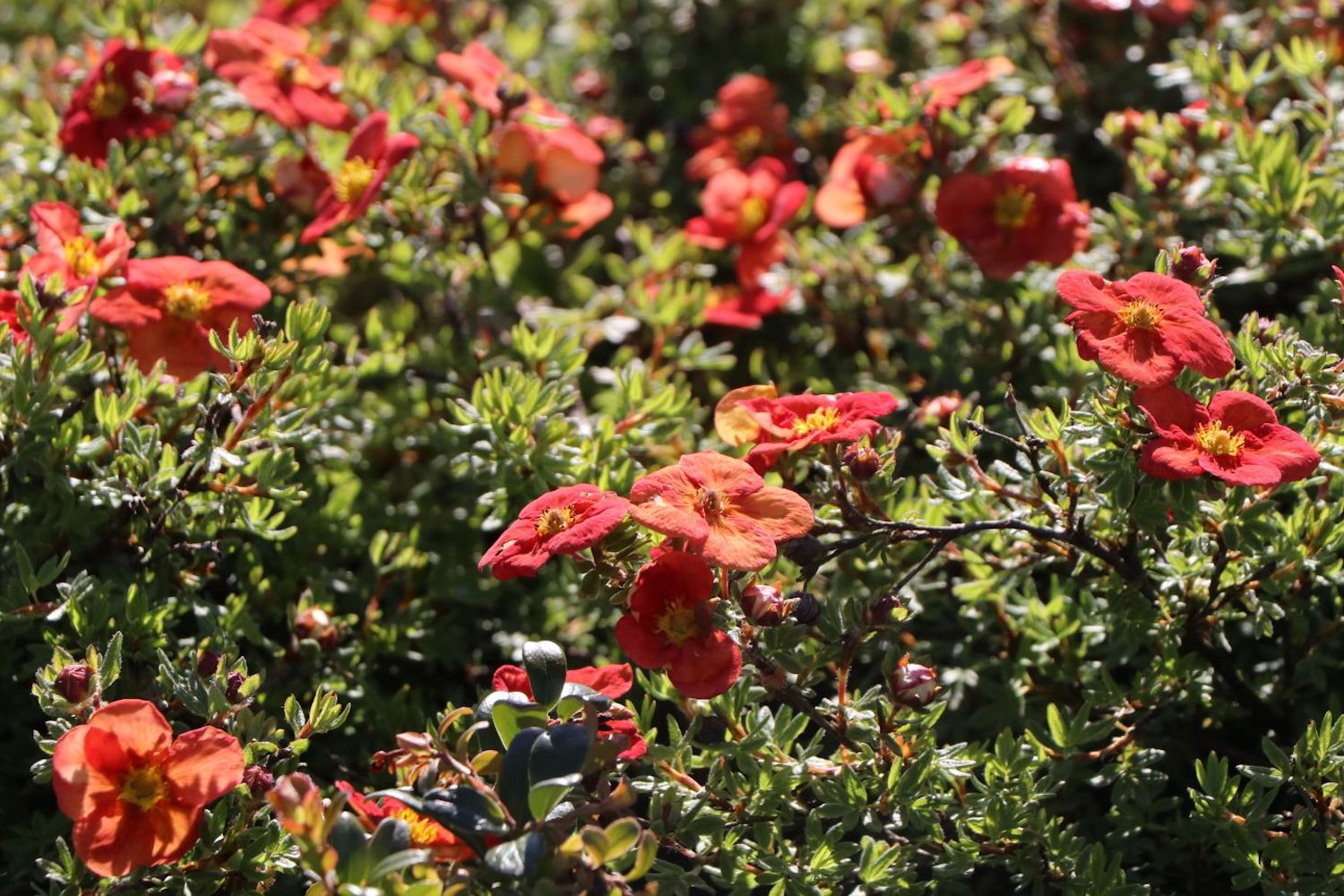Potentilla fruticosa [Marian Red Robin] = 'Marrob'
Approx. 0.5 litre pot
About this cultivar:
Potentilla fruticosa [Marian Red Robin] = 'Marrob' is a compact, dwarfish, shrub with small leaves composed of five narrow leaflets, and red flowers, pale yellow on the reverse, in summer and early autumn.
Was awarded the RHS AGM in 2002, what did they say in the trail notes? Raised by Laddie de Jong, Marian Nurseries, Ireland. Retains colour best of all reds and less orange than 'Red Ace'
- Position: Full sun, Partial shade
- Soil: Almost any soil, grows well in Ballyrobert
- Flowers: May, June, July, August, September, October
- Other features: Royal Horticultural Society Award of Garden Merit (RHS AGM)
- Hardiness: H7 - Hardy in the severest European continental climates (< -20°C), Fully hardy, grows well in Ballyrobert
- Habit: Clump forming, bushy, mat forming
- Foliage: Semi evergreen
- Height: 60 - 75 cm (2 - 2.5 ft)
- Spread: 60 - 75 cm (2 - 2.5 ft)
- Time to full growth: 5 to 10 years
- Plant type: Herbaceous Perennial, Alpine or Rockery
- Colour: Green, red
- Goes well with: Campanula, Stachys, Astilbe, and Eryngium
About this genus:
Potentilla (po-ten-til-la) is a genus containing over 300 species flowering plants in the rose family (Rosaceae) generally only found throughout the northern continents of the world (holarctic).. They are commonly called cinquefoil.
Typical Potentilla look most similar to strawberries, but differ in usually having dry, inedible fruit (hence the name barren strawberry for some species). The flowers are usually yellow, but may be white, pinkish or red. The accessory fruits are usually dry but may be fleshy and strawberry-like, while the actual seeds – each one technically a single fruit – are tiny nuts.
First was described by Linnaeus in 1753 they get their name from the latin, potens, meaning potent - the genus has been said to be useful in medicine and magic at least since the time of Hippocrates.
Potentilla is quite versatile and will tolerate most non-waterlogged soils in part sun or shade. They almost always look straggly in pots - so we rarely sell as many as we should. However when out of their pots they are no longer straggly and must be one of the best (most potent?) plants in the garden. Often to be found nestled into the rockery or atop a garden wall alongside Campanulas or Stachys, we also have ours in borders with Astilbe and Eryngium.




